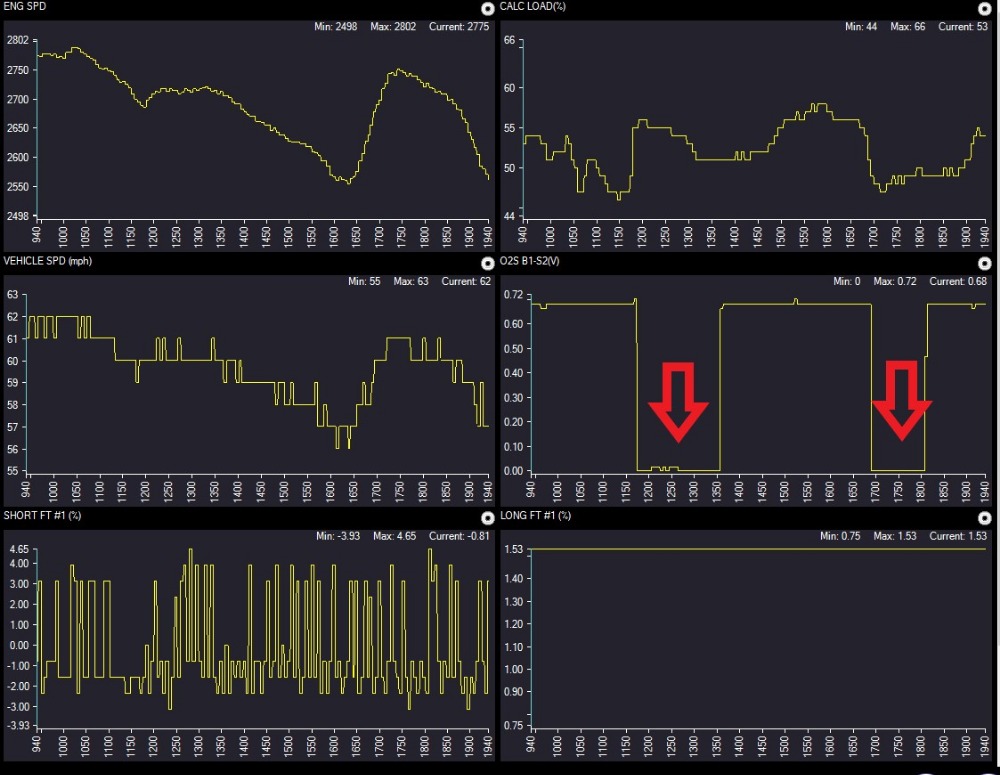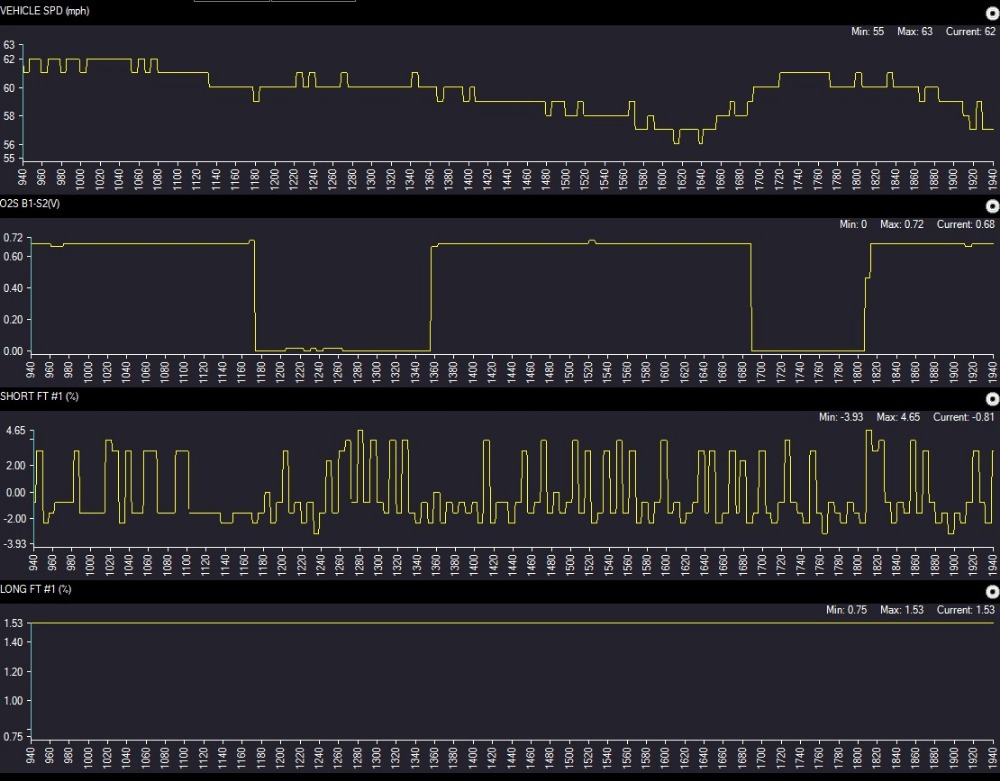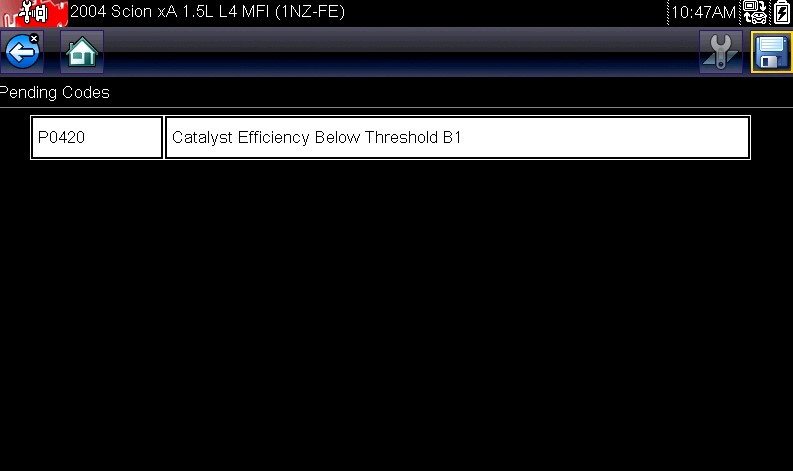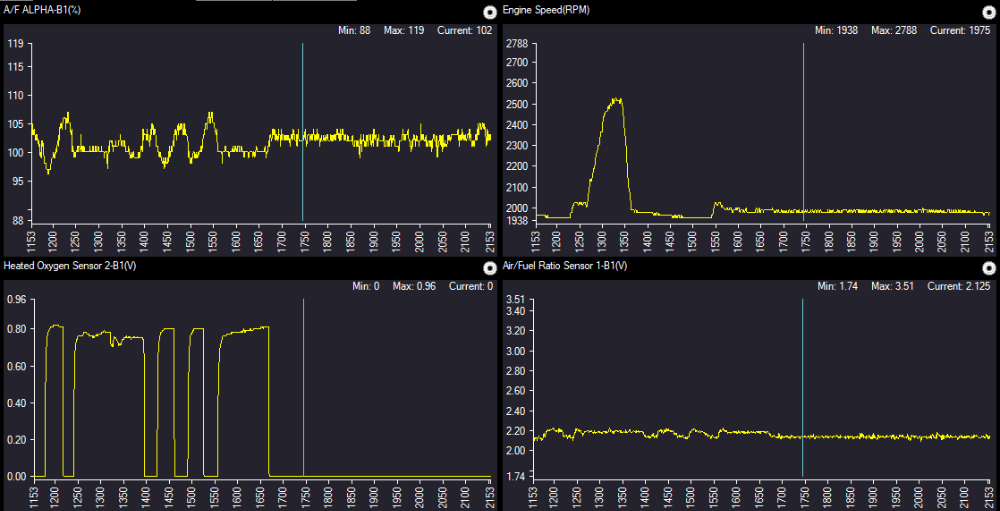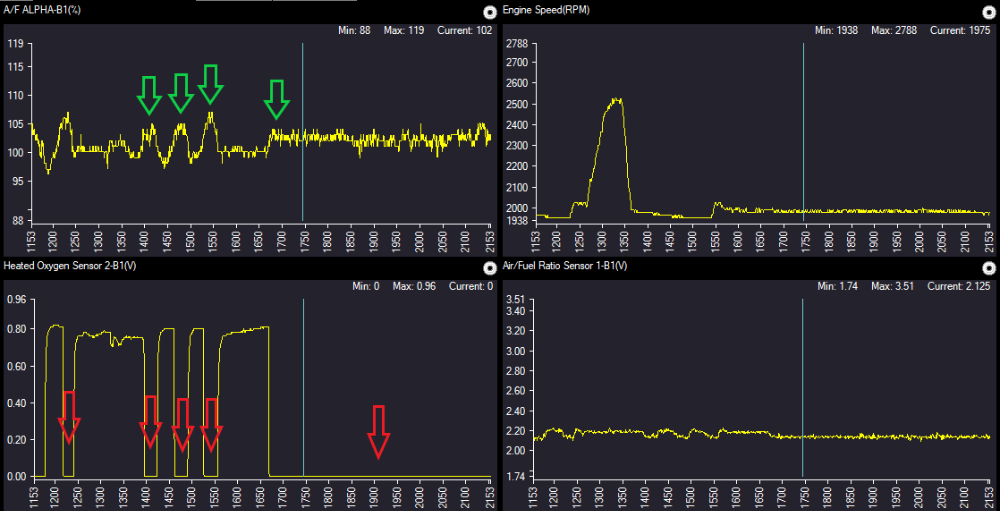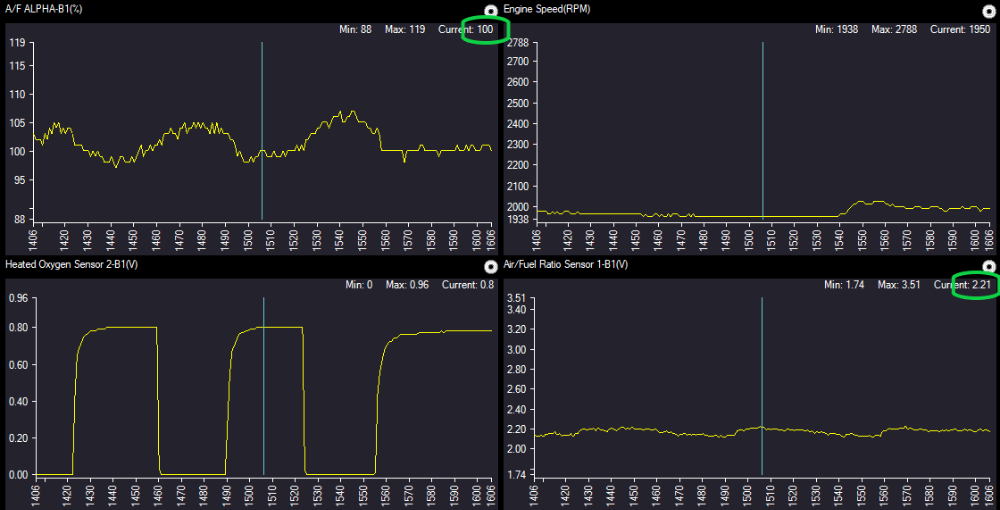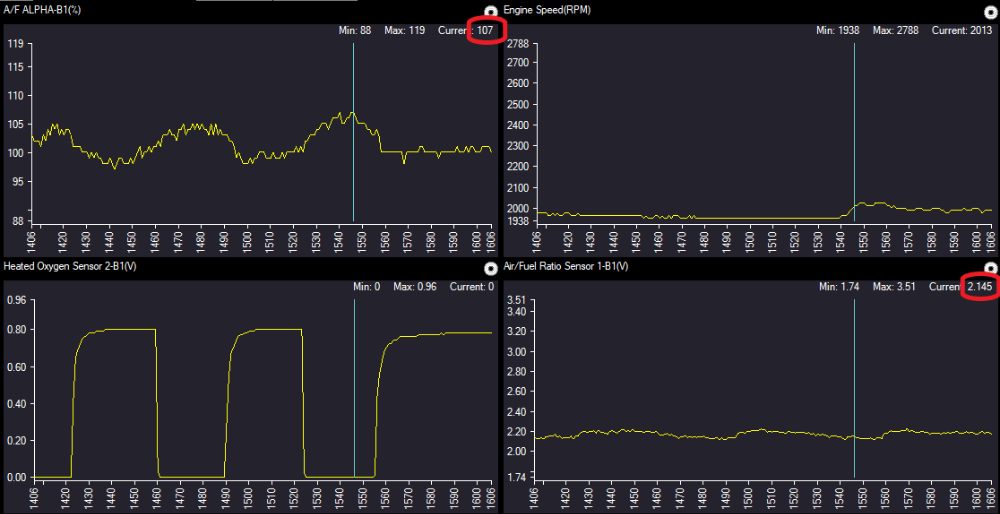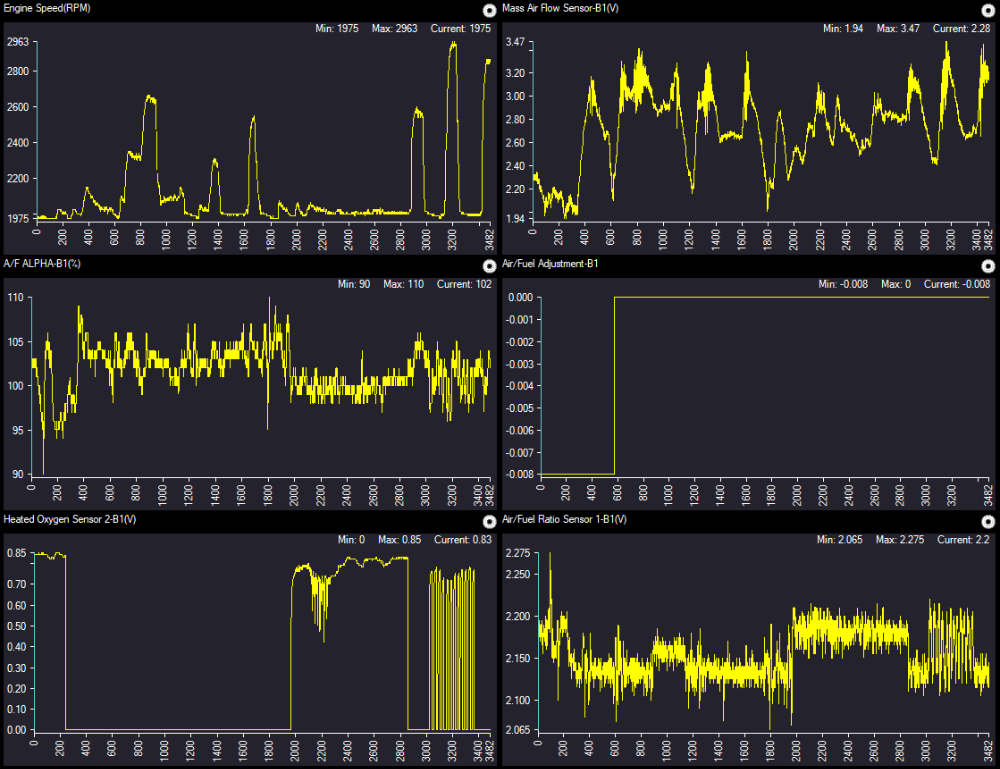Downstream fuel control experiments
- Tyler
-
 Topic Author
Topic Author
- Offline
- Moderator
-

- Full time HACK since 2012
- Posts: 6063
- Thank you received: 1531
www.scannerdanner.com/scannerdanner-prem...sensor-1-part-1.html
I've always felt like I had a good handle on these systems, and which cars use them. I can also count on one hand the number of fuel control issues I've seen related to a downstream issue. It's way, WAY down on my checklist when addressing fuel trim problems.
Then I saw an iATN post that... Kinda pissed me off? :silly:
Blair from Missouri wrote: The post-cat O2s "IS" a fuel control input. Toyota and SAAB have used the post-cat O2 to control fuel trim since 1988; before OBD-2. This sensor is used to fine tune the air-fuel ratio to maximize catalyst effeciency. It can also adjust the air-fuel ratio to compensate for a degraded catalyst. If you were to measure the actual amount of time the post-cat O2s is used during the running of the catalyst monitor (maybe once per trip) and compare that to the amount of time the post-cat O2s is used to fine tune the air-fuel ratio (almost always in closed loop), you will see that this sensors major function is fuel control. Every vehicle manufactured today uses the rear O2s for fuel correction; even if it is undocumented.
members.iatn.net/forums/search/search.as...orum1&ft=1&fv=4&qv=1
Oh really? :blink: The fact that the OE's may not document it doesn't surprise me at all. But every vehicle uses it? I can't say my experience in the field agrees.
But hey, that's what experiments are for! So I rig up the good ol' Scion xA guinea pig with a backprobe in the downstream O2 signal wire, scanner carefully watching fuel trims, and a test light at the ready. After getting everything warmed up with a good long test drive, I pull the downstream O2 signal low with the test light and watch the data. The arrows denote when the test light is connected:
Yeah, that didn't change the trims at all.
Viewed another way:
Noooooope, no change.
Side note, while I was there, I decided to see if I could create a false P0420 code by pulsing the downstream O2 low while driving. Turns out, yes! :lol:
Please Log in or Create an account to join the conversation.
- Noah
-

- Offline
- Moderator
-

- Give code definitions with numbers!
- Posts: 4957
- Thank you received: 1111
And at highway speed according to the data, your insurance company must love you, lol.
Thanks for sharing the data captures.
I'm a little suprised there was no effect I guess? Considering the Scion is a Toyota product and (I'm assuming) is most likely fitted with an upstream AFR sensor.
Maybe it was just ignoring full ground, or maybe it's effect on trim is not immediate?
I'm still examining both sides of the theory I guess. It does seem to be widely accepted as fact in the iATN community. That doesn't necessarily mean that it is though.
"Ground cannot be checked with a 10mm socket"
Please Log in or Create an account to join the conversation.
- Andy.MacFadyen
-

- Offline
- Moderator
-

- Posts: 3353
- Thank you received: 1037
" We're trying to plug a hole in the universe, what are you doing ?. "
(Walter Bishop Fringe TV show)
Please Log in or Create an account to join the conversation.
- Tyler
-
 Topic Author
Topic Author
- Offline
- Moderator
-

- Full time HACK since 2012
- Posts: 6063
- Thank you received: 1531
I may set up a variable resistor next time, just in case it doesn't like the 0V reading.
I feel like it's safe to say if it has a wideband sensor, it has downstream control. If it has an O2, it may or may not have downstream control. The older the car, the less likely. Fair?
Please Log in or Create an account to join the conversation.
- Noah
-

- Offline
- Moderator
-

- Give code definitions with numbers!
- Posts: 4957
- Thank you received: 1111
"Ground cannot be checked with a 10mm socket"
Please Log in or Create an account to join the conversation.
- Tutti57
-

- Offline
- Platinum Member
-

- Posts: 1096
- Thank you received: 253
How well would the rear sensor work in a case like this since it has that delay before its voltage changes when the mixture is altered?
Sent from my Moto E (4) Plus using Tapatalk
Please Log in or Create an account to join the conversation.
- ScannerDanner
-

- Offline
- Administrator
-

- Religion says do, Jesus says done!
- Posts: 961
- Thank you received: 500
But I'm with you, if they've been using downstream trims since 88? (They didn't even have downstream sensors then), you'd think we would have seen some issues along the way.
Thanks so much!
Hope you guys don't mind having me around more lately
Don't be a parts changer!
Please Log in or Create an account to join the conversation.
- Tyler
-
 Topic Author
Topic Author
- Offline
- Moderator
-

- Full time HACK since 2012
- Posts: 6063
- Thank you received: 1531
ScannerDanner wrote: But I'm with you, if they've been using downstream trims since 88? (They didn't even have downstream sensors then), you'd think we would have seen some issues along the way.
Agreed, something doesn't match up here.
I wonder if you unplugged or tampered with the a/f sensor it would default to using the rear one as a back up strategy?
There's an idea!
www.scannerdanner.com/forum/off-topic-se...blem-with-video.html
The longer I use the Scion as a test mule, the less impressed I am with it's diagnostic capabilities. :silly: It doesn't even have injector circuit codes.
Please Log in or Create an account to join the conversation.
- Noah
-

- Offline
- Moderator
-

- Give code definitions with numbers!
- Posts: 4957
- Thank you received: 1111
"Ground cannot be checked with a 10mm socket"
Please Log in or Create an account to join the conversation.
- Tyler
-
 Topic Author
Topic Author
- Offline
- Moderator
-

- Full time HACK since 2012
- Posts: 6063
- Thank you received: 1531
Just like last time, I got the car warmed up and cruising, then started applying the test light to the B1S2 signal circuit:
For clarity, I've marked up the parts when I applied the short:
There's a pretty direct, immediate correlation between pulling the downstream sensor low, and a rise in the Alpha (short term trim). About 5%, depending on when you measure it.
There's also a corresponding change in the upstream A/F sensor. Except, it's opposite of the Alpha. :blink: Right here, everything is normal:
The Alpha is textbook, and the 2.2V from the upstream A/F indicates a stoich mixture. Now the short is applied:
The upstream A/F is saying rich, but the Alpha is adding fuel. :silly: This is exactly the kind of opposing reaction we saw in SD's P2A00 video. Downstream fuel control at work.
For giggles, I also left the short applied during a highway cruise just to see what'd happen over time. I know from service information that the Air/Fuel Adjustment (or A/F ADJ, depending on your scanner) is related to the downstream control system, yet that PID didn't change much with the short applied.
No codes were set at any time during testing. Maybe I just didn't leave it applied long enough?
Sure hope all that junk made sense!
Please Log in or Create an account to join the conversation.

